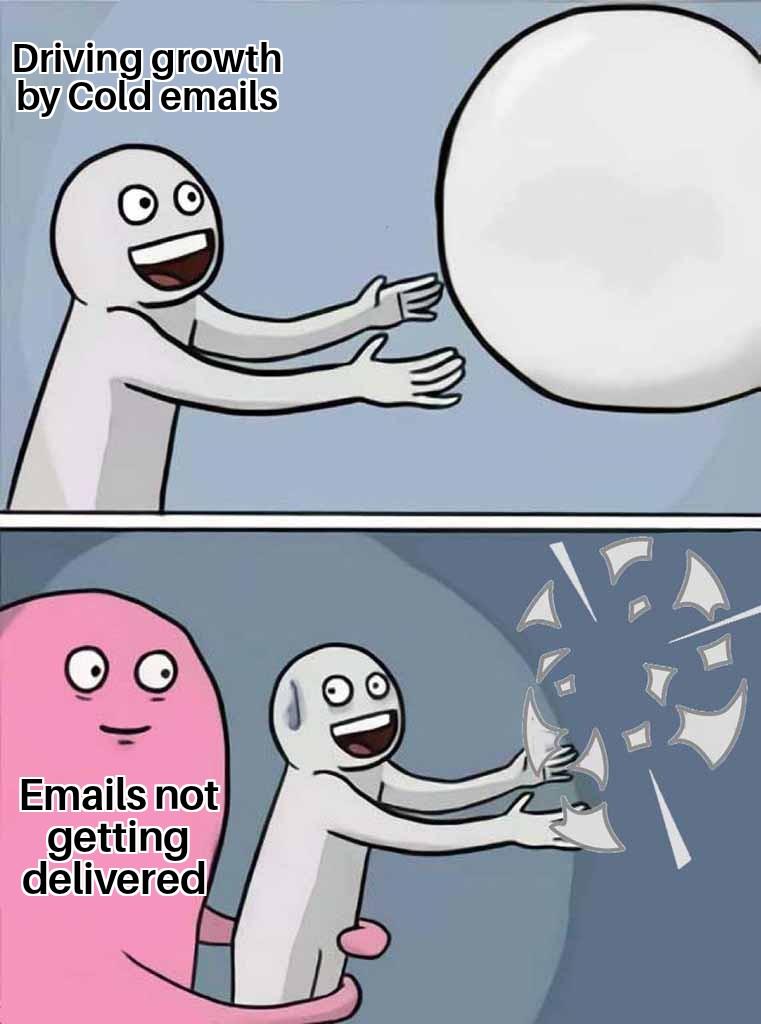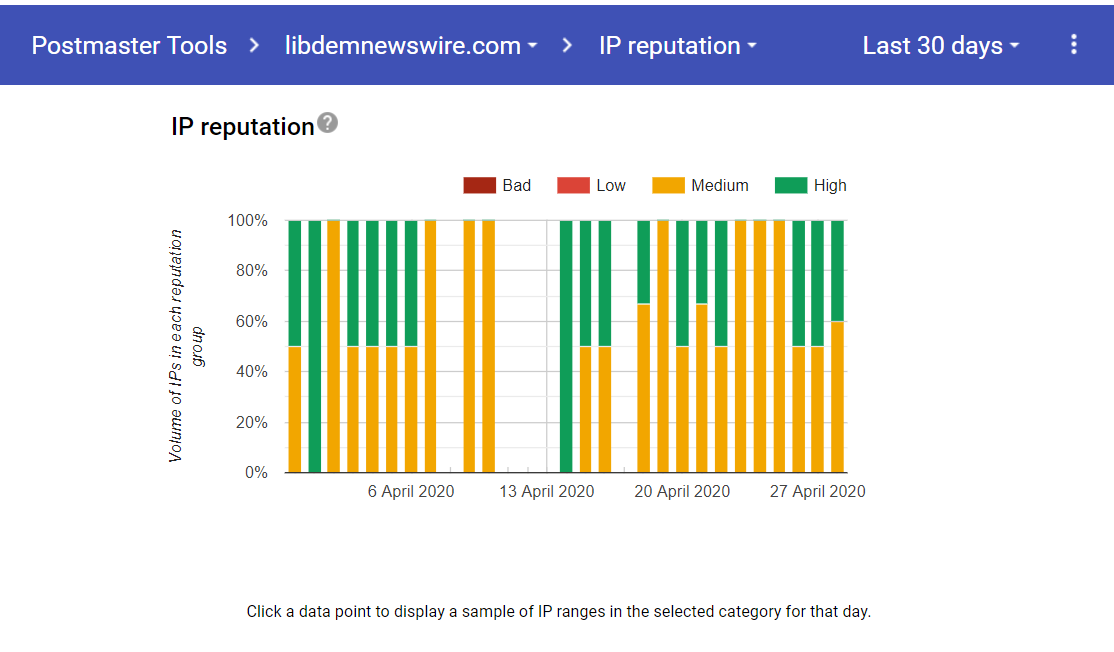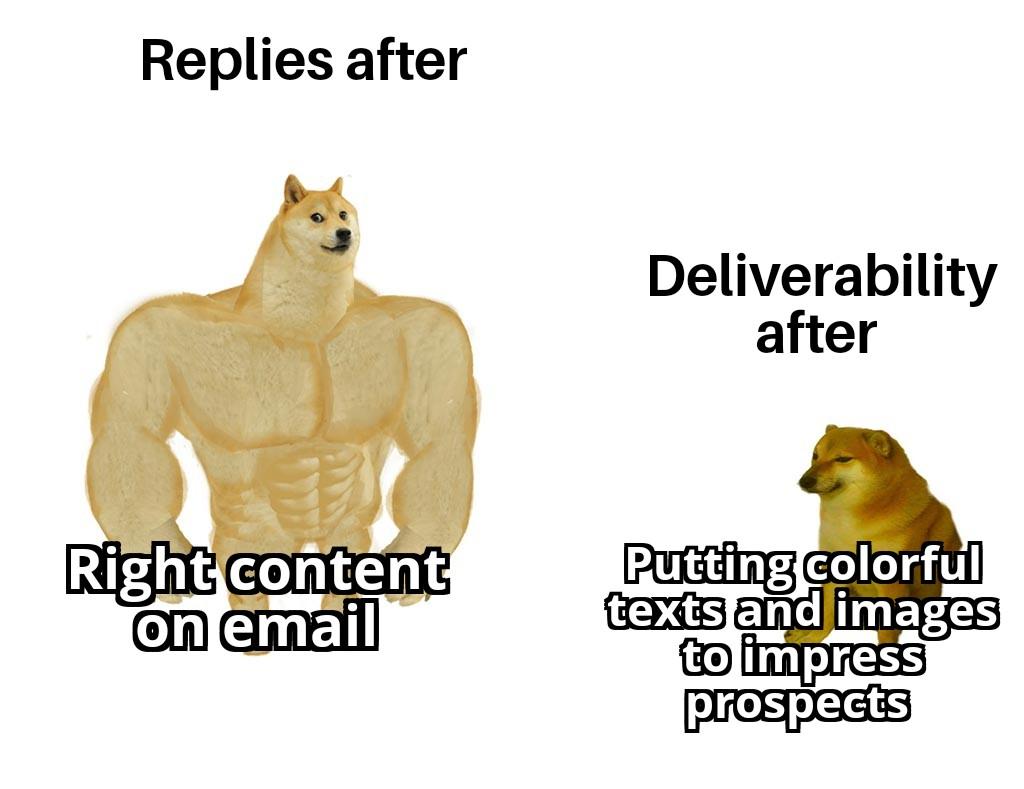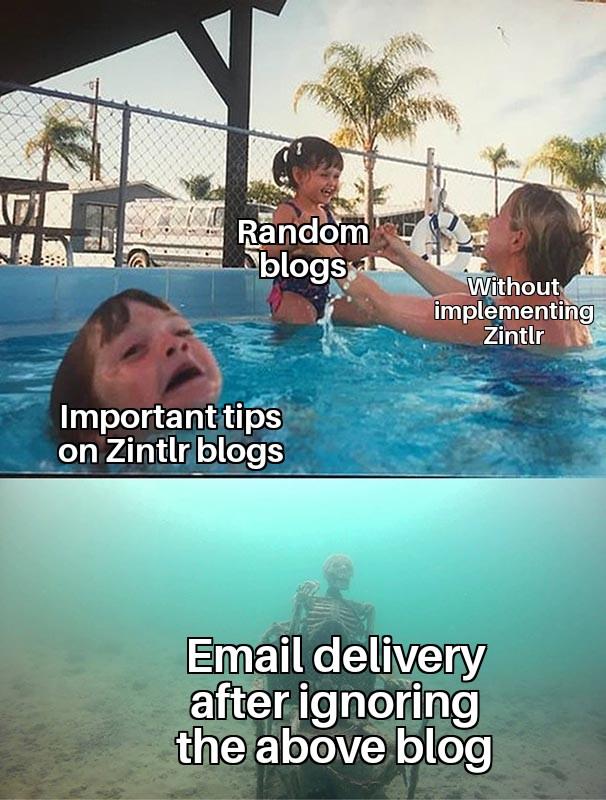Do you want your emails to land in your subscribers’ inboxes? Of course, you do!
But with so many spam filters, it can take a lot of work to see your emails. That’s where this guide comes in.
So what are you waiting for? Start reading and learn how to improve your email deliverability rate today!
Let’s get started with the basics first.

What is email deliverability?
Email deliverability refers to the ability of an email to successfully reach the intended recipients’ inboxes without being blocked, filtered, or marked as spam.
Why does deliverability matter to you?
No matter how good your content is, if your emails aren’t reaching your prospects, you have lost the game even without a contest. No matter how good your offer is or how good you timed it, you are at a toss if your deliverability is hampered. Your business goes for a toss.
The goal is simple: To effortlessly get into the Inbox.

Who is this meant for?
This guide on email deliverability is meant for anyone who wants to improve their email deliverability rate. This includes:
- Cold outreach marketers: If you’re sending cold emails to potential customers, you need to make sure your emails are landing in their inboxes. Otherwise, you’re wasting your time and money.
- Email marketers: If you’re sending regular emails to your subscribers, you need to make sure your emails are not going to spam. Otherwise, you’re risking losing subscribers and damaging your reputation.
- Anyone who is worried about their email open rate: If you’re not getting the open rates you want, it could be because your emails are not being delivered. By following the tips in this guide, you can improve your open rates and get more people to read your emails.
- Anyone who is trying to build outbound sales: If you want to build a strong outbound sales team, you need to make sure your emails are reaching your prospects. By following the tips in this guide, you can improve your email deliverability rate and close more deals.
No matter which of these categories you fall into, with this guide, you can learn to improve your email deliverability rate.
What leads to poor email deliverability?
Let’s explore some key aspects related to email deliverability:
1. Sender Reputation: ISPs assess the reputation of the sender based on various factors, such as the sender’s IP address, domain, sending practices, and recipient engagement metrics. A positive sender reputation increases the likelihood of emails being delivered to the inbox, while a poor reputation can lead to emails being sent to the spam folder or blocked altogether.
Long story short, based on your consistent practices, like open rates received, responses received, marked as spam, click-through rates, the volume of emails sent regularly, your content, and probably a hundred other metrics are tracked to build a reputation of your email. You can consistently track your domain reputation from Google’s Postmaster Tools.

If you have a new domain and are considering starting cold emailing, I would strongly suggest warm-up your emails at least 14-25 days in advance, and monitor the warm-up health consistently. If you skip this, be ready to see your emails going to spam and promotions, while your prospects might not see it. There are tons of tools like Instantly, and Lemwarm which can help you with the warmup.

2. Email Content: The content of an email can impact deliverability. Emails with suspicious or spam-like content, excessive use of promotional language, or misleading subject lines are more likely to be filtered as spam. Crafting well-designed and relevant emails that provide value to recipients helps improve deliverability.
I personally ensure that my email content follows these best practices:
- No spam & promotional words.
- No HTML content.
- Low image-to-text ratio (Use fewer images)
- Not too many unnecessary links & long links (stick to a maximum of 1-2 links as CTA)
- No colorful text or many CAPITALIZED WORDS, avoid changing different fonts and sizes.
- Avoid large & shady attachments.
- Use Spintax (The email providers track if you are sending the same content to everyone and score you accordingly, so use [Hi, Hey, Hello] or [Best, Kind Regards, Thanks, Regards] or other areas interchangeably, along with a greater level of personalization.)
- Provide an option to unsubscribe or opt-out, either by link or by replying to you.
- Avoid too many special characters.
- Avoid unnecessary emojis until it’s a B2C email, and avoid grammatical mistakes.

3. Authentication Protocols: Implementing authentication protocols, such as SPF, DKIM, and DMARC, helps verify the authenticity of emails and protects against spoofing and phishing attempts. These protocols add an extra layer of trust for ISPs, increasing the chances of emails reaching the inbox.
Having a misconfigured SPF, DKIM, or DMARC would lead to email providers coming down heavily on your domain. Set it well rightly. You could verify the configuration from the MxToolbox.
Without the right configuration, there is a certain level of suspicion about the authenticity of your emails, which could hamper your deliverability largely.
4. Recipient Engagement: ISPs consider recipient engagement metrics, such as open rates, click-through rates, and replies, to determine the quality and relevance of emails. Higher engagement indicates that recipients find the emails valuable, which can positively impact deliverability.
This is where email warmup may help you, to get started. It artificially builds a good reputation for you, by emulating real human-like conversation, engagements, replies, Click through rates (CTR), and so on. This also includes a daily pattern in which you are sending emails.
For example, say, you sent 20 emails today, 25 tomorrow, and 24 days after, and if you send 300 the next day, it is seen as a spike and unusual behavior. Break down your campaign and build consistency across your email-sending patterns. This is critical for your deliverability, apart from having good open rates and reply rates which can be due to compelling subject/content and actionable CTA.
5. Bounce Rates: Bounces occur when an email cannot be delivered to the recipient’s mailbox. High bounce rates can negatively affect deliverability as ISPs interpret them as a sign of poor list quality or sending practices. Monitoring and managing bounce rates is essential to maintaining good deliverability.
You need to consistently improvise your prospect list, keep a check on the verification of email lists, consistently remove unsubscribers, remove inactive users, and maintain cleanliness.
If the email does not exist, you could be penalized for the hard bounce. If the percentage of hard bounces is high, your ISPs could penalize it and your deliverability may be negatively impacted.
Similarly, A soft bounce in the email refers to a temporary failure in delivering an email to the recipient’s mailbox, which could happen if the end user’s mailboxes are filled, or any other reasons leading to temporary failures.
6. Feedback Loops and Complaints: ISPs provide feedback loops that allow recipients to report unwanted or spammy emails. A high number of complaints can harm the sender’s reputation and deliverability. Handling complaints promptly and adhering to unsubscribe requests are important for maintaining a positive sender reputation.
Additionally, keep a tap on blacklists and spam lists and make a point to not feature in them.
I recommend an additional hack, use alternate domains, if you are creating large-scale outbound campaigns, for example, zintlr.com could have zintlr.net or zintlr.in and so on.
Having difficulty prospecting? Check out our blog on Prospect Awareness and improve your prospecting skills. Zintlr is a great resource if you’re looking to expand your prospect list.
Conclusion
Email deliverability is a complex topic, but it’s important to understand the basics if you want your emails to reach your subscribers’ inboxes. By following the tips in this guide, you can improve your email deliverability rate and ensure that your emails are seen by the people who matter most.
Of course, there’s no magic bullet for email deliverability. But by following the tips in this guide, you can give yourself a much better chance of success.
So what are you waiting for? Start implementing these tips today and see the difference it makes in your email deliverability rate!


